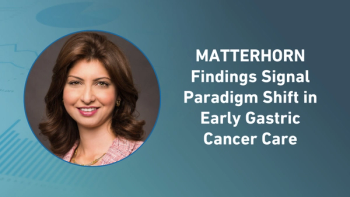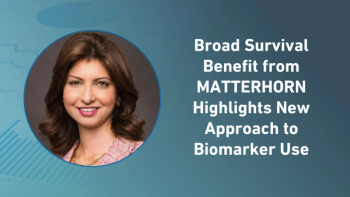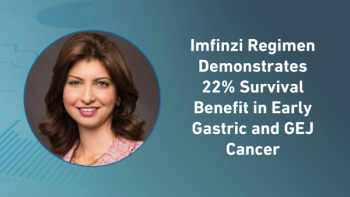
- Applied Clinical Trials-11-01-2012
- Volume 21
- Issue 11
Capturing Suicidal Patient Data
Meeting FDA requirements: the electronic collection of suicidal ideation and behavior data.
In recent years a great deal of attention has been paid to monitoring suicidal ideation and behavior (SIB), and how best to assess it in a clinical trial setting. This attention is in part due to findings of apparent treatment-emergent SIB caused by several different types of drugs. In response, the FDA released a draft guidance "Suicidality: Prospective Assessment of Occurrence in Clinical Trials" in September 2010. The recently revised draft guidance reinforces the principles of prospectively assessing SIB, using progressive, efficient approaches in clinical trials.
The primary objectives of the draft guidance are: to ensure timely recognition and treatment of patients experiencing SIB during study participation; and promote more timely, complete, and systematic collection of SIB data to improve detection of change in individual trials and across pooled analyses. In particular, the assessment of SIB is required in clinical trials of new drugs being developed for psychiatric indications and any drug that appears to have a CNS effect. This includes trials in other areas such as epilepsy, smoking cessation, and weight-loss, due to long-standing concerns with SIB in these study populations.
This article will review the FDA's current recommendations on SIB assessment in clinical development, and offer insight as to how the electronic collection of this important data can help trial sponsors meet current regulatory requirements.
Draft guidance recommendations
The newly revised guidance brings more clarity to the expectations of when, where, and how to assess SIB, suggesting that although it is only broadly prescribed in psychiatric clinical trials, it should also be included in clinical trials involving selected drugs with recognized indications of SIB and any trial involving a compound with a CNS effect. It cites data showing that this assessment can be low burden, taking less than four minutes on average. FDA also emphasizes the value of the lifetime evaluation as a good assessment of patient risk, citing a study showing the predictive value of each lifetime question.
FDA recommends that suicidality assessment instruments map to 11 Columbia Classification Algorithm for Suicide Assessment (C-CASA) codes. As the prospective counterpart to C-CASA, the Columbia Suicide Severity Rating Scale (C-SSRS) results in findings that directly code to the C-CASA, and is an accepted instrument used to asses SIB of trial participants.
The C-SSRS is a free-form, semi-structured interview intended for administration by clinicians or study staff during scheduled study visits. C-SSRS explores suicidal ideation levels and intensity, as well as behaviors and lethality through a series of probing questions. It is conducted at baseline (this would be a lifetime suicidal ideation and behavior assessment), and at each patient visit.
A self-rated approach
Procedural variances in the way clinical assessments are performed by human raters are associated with a number of shortcomings, negatively impacting the reliability of results. Even with training, rater skills deteriorate over time and clinicians are often influenced by prior experiences with patients. This is especially true for uncomfortable subjects such as SIB. As a result, researchers are actively looking for ways to overcome these limitations.
The electronic C-SSRS (eC-SSRS), a self-rated version of the C-SSRS has been cited by the FDA as an effective way of meeting this assessment requirement, simultaneously eliminating procedural variances and reducing site burden. The eC-SSRS is a validated, fully structured clinical interview, designed for computer-administration directly by patients using interactive voice response (IVR) or web technology. Questions are presented; patients provide their responses; and the system branches to the appropriate follow up questions, faithfully adhering to C-SSRS probing specifications. The findings are registered, scored, and a findings report is immediately sent for site review. The investigator can review this report with the patient as needed and follow up per the trial protocol. This coordinated approach provides consistent assessment and documentation, and reduces site burden.
The eC-SSRS approach has been used in many clinical trials and the data has been accepted and cited by the FDA. Streamlining the data collection process, eC-SSRS facilitates the collection of high quality, unbiased data directly from the patient, while at the same time eliminating queries and processing delays.
Monitoring uncomfortable topics
A number of studies have evaluated the effectiveness and accuracy of the C-SSRS and the eC-SSRS. The sensitivity of the clinician-administered C-SSRS has been questioned. To summarize, "...suicidal thoughts and plans were more likely to be endorsed by patients than clinicians, and clinicians were less likely to use the more extreme rating. ...These results suggest the possibility that some patients may be more willing to endorse suicidal ideation on self report assessments or that some clinicians may be reluctant to record suicidal ideation."1
It has also been proven that due to the confidential nature of suicidality assessments, patients are more likely to respond to an impartial electronic instrument rather than to various site staff, further improving the quality of data. This reliable approach, when combined with the investigator's review of the findings is expected to ensure patient safety and consistent meta-data.
Conclusion
Suicidal behavior is rare, even in clinical trials that involve 'high-risk' patients, but the risk is real and the need to protect patients and improve data quality are of paramount importance. As such, improved precision of suicide monitoring in clinical trials is critically important for patient and molecule protection.
Through more reliable data, SIB assessment instruments like the self-rated eC-SSRS can overcome the shortcomings associated with traditional, clinician-based assessments. The eC-SSRS is an efficient and effective approach to collect lifetime reports of suicidal ideation and behavior at baseline, and for prospectively monitoring ideation and behavior at subsequent visits. The electronic presentation; data capture; and immediate feedback of results to the investigator for review, provides sponsors with a fast and reliable means of collecting valuable information relating to the safety of patients, and addresses the objectives of the FDA guidance for monitoring suicide ideation and behavior in clinical trials.
Michael Federico is Vice President, ePRO Solutions at ERT, 1818 Market Street, Suite 1000, Philadelphia, PA, e-mail:
References
1. M. H. Trivedi et al., "Concise Health Risk Tracking (CHRT) Scale: A Brief Self-Report and Clinician Rating of Suicidal Risk," J. Clin. Psychiatry, 72 (6) 757-764 (2011).
Articles in this issue
almost 13 years ago
Taking the Pulse of Ethics Committee Viewsalmost 13 years ago
Act Coveralmost 13 years ago
Survey Results of Start-Up Cycle Timesalmost 13 years ago
Business and News Update November 2012almost 13 years ago
Act Insert coveralmost 13 years ago
Pediatric Drug Developmentalmost 13 years ago
ePRO Industry Growthalmost 13 years ago
Generic Drugs Making Wavesalmost 13 years ago
In the Race to Capture Clinical Data, Does Data Quality Suffer?almost 13 years ago
Are CRCs Reaching Their Tipping Point?Newsletter
Stay current in clinical research with Applied Clinical Trials, providing expert insights, regulatory updates, and practical strategies for successful clinical trial design and execution.






.png)



.png)



.png)
.png)
